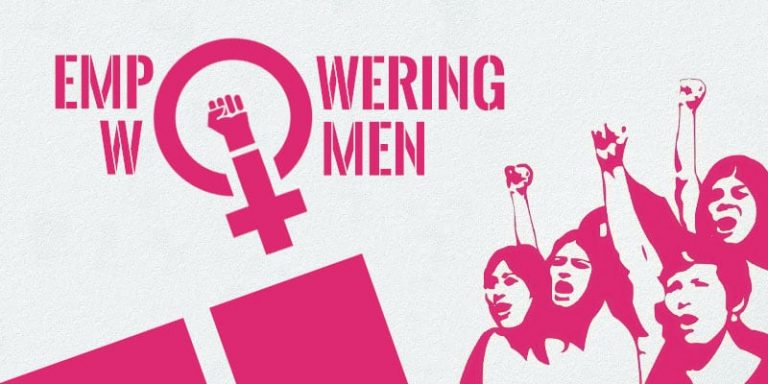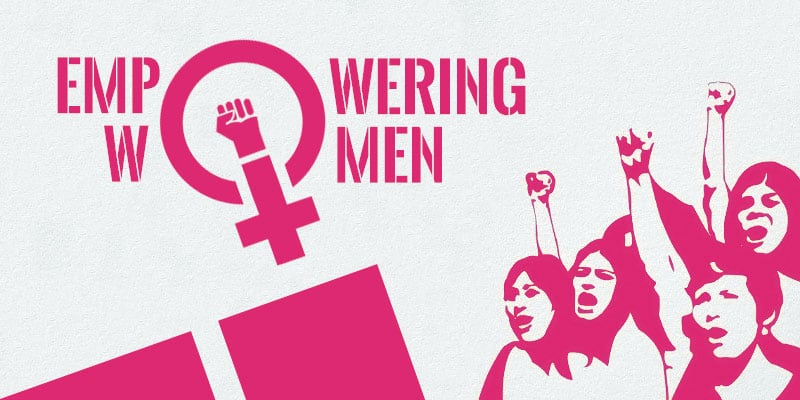
 Let us not forget that as women gain rights, families flourish, and so do societies. That connection is built on a simple truth: Whenever you include a group that’s been excluded, you benefit everyone.
Let us not forget that as women gain rights, families flourish, and so do societies. That connection is built on a simple truth: Whenever you include a group that’s been excluded, you benefit everyone.
When you’re working globally to include women and girls, who are half of every population, you’re working to benefit all members of every community. Gender equity lifts everyone. Women’s rights and society’s health and wealth rise together.
By Nazarul Islam
Beyond doubt, the ongoing pandemic Covid-19, has transformed how we imagine about the social context of work; and the norms which govern their work. Our male dominated society has not considered even a token recognition, long due, to honor our hard working women—be it at their places of work or at home. Today, this hitherto needs to be quantified—to raise the dignity of their work.
In an editorial for the Times of India, it was rightly analyzed that India’s Supreme Court’s jurisprudence in several cases filed under Motor Vehicles Act, has been discreet in reflecting that there exists some judicial willingness to recognize social reproductive labor, performed by women, within the home.
Indeed in January this year, the Supreme Court had directed an insurance company to pay a higher claim amount, by taking into account the unpaid work performed by a deceased homemaker.
Therefore, we need not be surprised if this has given rise to considerable debate. For one, critics point out that a lot of social reproductive work—a term coined to denote work that nurtures future workers (e.g. child care), regenerate the current workforce (e.g. cooking, cleaning etc.) and maintain those who cannot work (e.g. caring for the elderly), is related together and effective in nature, making it more than a task, that can be performed in exchange for wages.
Further, as middle-class norms of marriage and family have gained currency, the typical house is associated with love, whereas the workplace is associated with money. Thus, we need to realize that housework ought not to be treated as a labor of love.
However, this is problematic on several counts. Primarily, this way of thinking obscures the extent to which marriage, in our societies of Pakistan, India and Bangladesh, is still an economic necessity for some women and the degree to which legal inequality was inscribed within marriage and the family. In fact, according to data collected by the Survey Office (2014), 60.1 per cent of rural women and 64.1 per cent of urban women reported that they took on domestic duties because no other family member was available to take up this work.
Furthermore, the anxiety surrounding the idea of monetizing care and work is nothing new. In fact, it explains why the most marginalized members of society — migrant lower class, lower caste women — are employed as domestic workers who live beyond the imagination of labor law and social security schemes.
Our labor laws have effectively privileged workers in core industrial sectors over those in other sectors of the economy. This increases the vulnerability of women since it reduces their bargaining power in trying to get more protection.
A study carried out in 2018, was published in Women’s Empowerment. It has revealed how domestic workers did twice the work that they were contractually obligated to do because of the higher social standing, co-constituted by caste and class, or their employers.
There are diverse domestic constituents within the state that benefit from not recognizing social reproductive work. Families of course benefit from the free labor. Employers benefit since employment in the formal labor market is based on the ideal male worker, who is unencumbered by domestic responsibilities and can work long hours.
If this unpaid but socially necessary reproductive work is considered to be as valuable as paid labor, employers would not be able to design jobs based on the assumption that it is the worker’s private and individual responsibility to adapt their caring responsibilities to the temporal requirements of the job.
Instead, working-time norms would be designed on the assumption that all workers engage in domestic labor for others, and women would no longer be expected to shoulder the economic burden of unpaid care work.
Although trade unions are also largely represented by workers in the primary labor market—ironically, the same rules about the recognition of women’s work in monetary terms do not apply when men are the beneficiaries of such a claim.
Again, the radical anthropologist David Graeber has pointed out: in today’s economy, not all labor is geared towards the production of skill or service. Instead, a lot of it is relational in nature. Thus, it is not obvious why some relations are considered “social” and others are considered “market”.
Feminists have made an ironclad case to show how productive work and reproductive work are intertwined and women’s disproportionate responsibility in social reproduction is actually a huge part of the reason why women disproportionately have precarious personal work profiles.
Admittedly, just saying women’s social reproductive work ought to be given monetary compensation is not enough! We need to decide how we are to construct the tools needed to navigate a working world in which key assumptions about the nature and operation of that world which have long influenced our labor laws, and thus, grounded our theories so that these no longer apply.
We also need to go into the question of how this compensation is decided and further, need to be able to assign appropriate values to reproductive work in a way that doesn’t exacerbate existing inequalities.
For instance, both the Opportunity Cost Model, which evaluates the salary paid to the homemaker by evaluating what she would have earned had she not remained at home. And then of course, the Replacement Model, again, evaluates how much it would cost to replace the homemaker with paid workers, relying upon factors such as the woman’s existing accomplishments. This is done to predict what she would have been able to achieve in the formal workforce and casteist ideas of what constitutes “good” values and who has the ability to impart them.
Again, part of the social reproductive labor that women do is childcare. Given that paid domestic help in our homes is not even allowed to use the same cutlery as the employers, it’s unlikely that they will be seen as imparting good values to children.
At any rate, these are the discussions we should be having. Otherwise, anthropologists in the future will have to explain how our performative love for women as mothers, wives and sisters relates to our relentless anxiety that they be rewarded in any tangible terms.
Let us not forget that as women gain rights, families flourish, and so do societies. That connection is built on a simple truth: Whenever you include a group that’s been excluded, you benefit everyone. And when you’re working globally to include women and girls, who are half of every population, you’re working to benefit all members of every community. Gender equity lifts everyone. Women’s rights and society’s health and wealth rise together.
___________________________
About the Author
